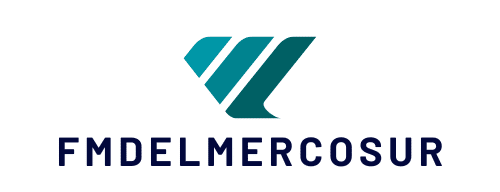How to Develop Effective Content Strategies for UK Corporate Training Programs?

In the digital world, the ways of learning and training are constantly changing. As businesses adapt to the current environment, they must also modify their L&D (Learning and Development) strategies to cater to the evolving needs of their employees. The focus of this piece is to guide you in developing an effective content strategy for your UK-based corporate training programs. The article will break down the key elements needed for a successful strategy, which will help your employees gain the essential skills they need to thrive in your business.
Identifying Your Company’s Training Needs
Before designing a content strategy, it is vital to first identify the training needs of your company. This involves understanding the specific skills and knowledge your employees lack, and how these gaps can affect your business performance.
Cela peut vous intéresser : How Can UK Luxury Brands Leverage WeChat for Marketing in China?
Start by evaluating the company’s strategic goals and consider how the workforce can contribute towards achieving those objectives. Conduct skills gap analyses to identify the areas where your employees need training. Once you have identified those areas, you can then create a plan to address those needs.
This process should be continuous as the business environment is always changing, and so are the skills required. Regular performance reviews and feedback sessions can help you stay updated on your employees’ learning needs.
En parallèle : What Are the Impacts of Brexit on UK Data Centers and Cloud Services?
Designing Tailored Training Content
Once you have identified the training needs, the next step is to design tailored training content that will cater to these needs. A one-size-fits-all approach does not work in corporate training, as different employees have different learning styles and preferences.
For designing tailored content, you need to understand the specific learning styles of your employees. Some learners might prefer visual content, some auditory, while others may learn best through practical exercises. Based on this understanding, incorporate various content formats into your training program, such as videos, podcasts, infographics, and interactive quizzes.
Additionally, the content should be designed to be easily digestible and engaging. Break down complex topics into smaller, manageable sections and incorporate real-life examples and case studies to make the learning more relatable.
Incorporating Technology in Learning and Development
Technology plays a crucial role in modern corporate training programs. It can help make the training content more accessible, engaging, and effective.
Investing in a Learning Management System (LMS) can be a wise move. An LMS can provide a centralized platform for all your training content, making it easy for employees to access and learn at their own pace. Additionally, an LMS can help you track and analyse the learning progress of each employee, providing valuable insights that can be used to further refine your content strategy.
Another tech-driven approach to consider is the use of virtual reality (VR) and augmented reality (AR) in your training programs. These technologies can provide immersive and interactive learning experiences, especially for training that requires practical skills.
Promoting Continuous Learning and Development
Learning and development should not be a one-time event but a continuous process. Promoting a culture of continuous learning in your company can help keep your employees’ skills up-to-date and ensure sustained business performance.
Encourage your employees to take ownership of their learning. Provide them with the necessary resources and support they need to learn and grow. Recognize and reward their learning efforts to keep them motivated.
Implementing a mentoring program can also be effective. Experienced employees can share their knowledge and expertise with less experienced ones, fostering a learning environment within your company.
Measuring the Success of Your Training Program
Lastly, it’s important to measure the success of your training program. This will help you understand if your content strategy is working or if it needs adjustments.
To measure success, define the key metrics that align with your company’s strategic goals. These could include the number of employees who completed the training, the improvement in their performance, or the increase in their productivity.
Regular feedback from your employees can also provide valuable insights. Ask them about their learning experience, what they found most helpful, and what areas need improvement.
In summary, developing an effective content strategy for your corporate training program involves understanding your company’s training needs, designing tailored content, leveraging technology, promoting continuous learning, and measuring the success of your program. These steps can help you ensure that your employees gain the necessary skills and knowledge they need to contribute to your company’s success.
Utilising Social Media and Content Marketing in L&D Strategies
In this digital era, the role of social media and content marketing in Learning and Development (L&D) cannot be overstated. These platforms can be leveraged to augment your company’s training programs, making them more dynamic, interactive, and impactful.
Social media platforms like LinkedIn, Twitter, and Facebook can serve as innovative tools to deliver training content. For instance, LinkedIn Learning offers a wide variety of professional courses for employee training. Similarly, private Facebook groups can be created for specific training courses where participants can interact, ask questions, and share their experiences. Twitter chats can also be a powerful tool for group discussions and knowledge sharing.
Content marketing plays an equally important role in an effective L&D strategy. A well-devised content marketing plan can help transform your training program from a traditional, static model to a dynamic, learner-centric one. For instance, blog posts can be used to deliver training content in a simple, digestible manner. Infographics and videos can make complex topics more understandable, while webinars can provide a more interactive learning experience.
However, it’s essential to ensure that the content you share is relevant and valuable to your employees. The ultimate goal should be not just to deliver information, but to engage employees in a learning conversation. Regularly update your content and make sure it resonates with the current needs and interests of your staff.
Creating a Career Development-Oriented Training Program
A career development-oriented training program can significantly enhance the learning experience for your employees, motivating them to engage more deeply with the training. By linking the training program to their career progression, you can help employees see the direct benefits of their learning efforts.
Firstly, make sure your training program aligns with the various career paths within your company. For example, if you have a leadership development program, ensure that it equips employees with the skills they need to take on leadership roles within your organisation.
Next, involve your employees in the training development process. Ask them about the skills they want to learn and how they envision these skills helping them progress in their careers. This will not only help you create a more relevant training program, but it will also make your employees feel valued and heard.
Further, consider implementing a system that recognises and rewards learning. This could be through certifications, badges, or even promotions. Recognising your employees’ learning efforts can boost their motivation and encourage continuous learning.
Lastly, communicate regularly with your employees about their career development. Regular discussions about career goals and paths can help them see how the training program fits into their career journey.
Conclusion
Designing an effective content strategy for your UK-based corporate training programs involves a meticulous approach. You must first identify your company’s training needs, create tailored content, and utilise technology to aid in learning and development. Additionally, incorporating social media and content marketing into your L&D strategy can enhance engagement and cater to the diverse learning styles of your workforce.
Creating a career development-oriented training program is also vital to incentivise employees to engage in continuous learning. Regularly measure the success of your training program to ensure that it remains effective and relevant.
Remember that your training program should not be static. Constantly revising your L&D initiatives, adapting to changing skills gaps, and fostering a learning culture will ensure your training programme remains a valuable tool for your employees and your business. This strategic approach to corporate training will not only enhance your employees’ skills and knowledge but will also contribute to your company’s overall success.
